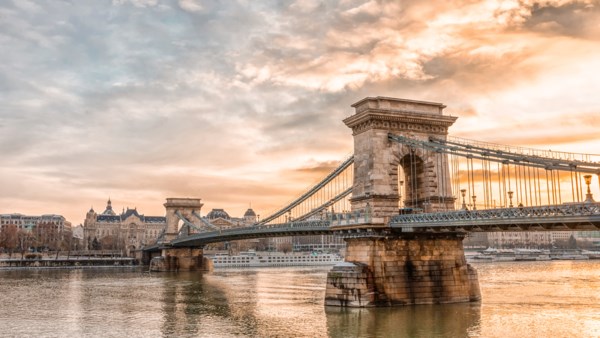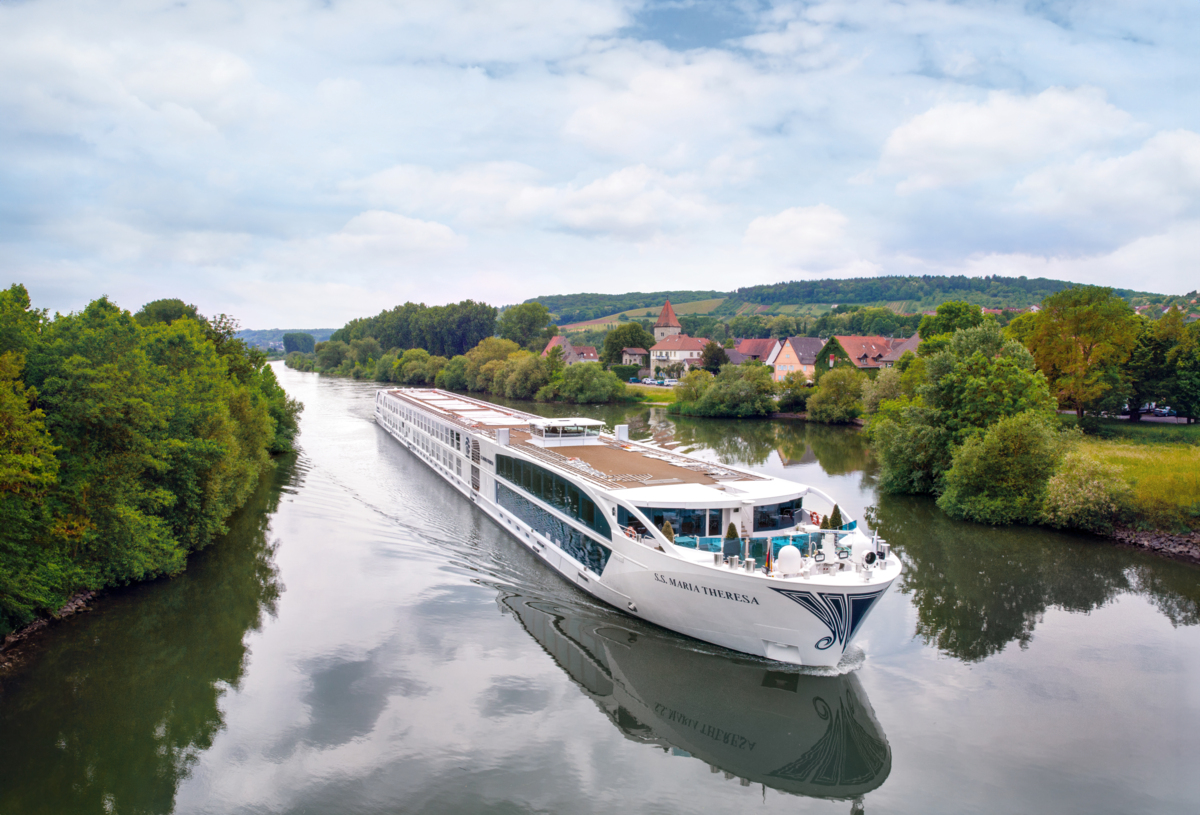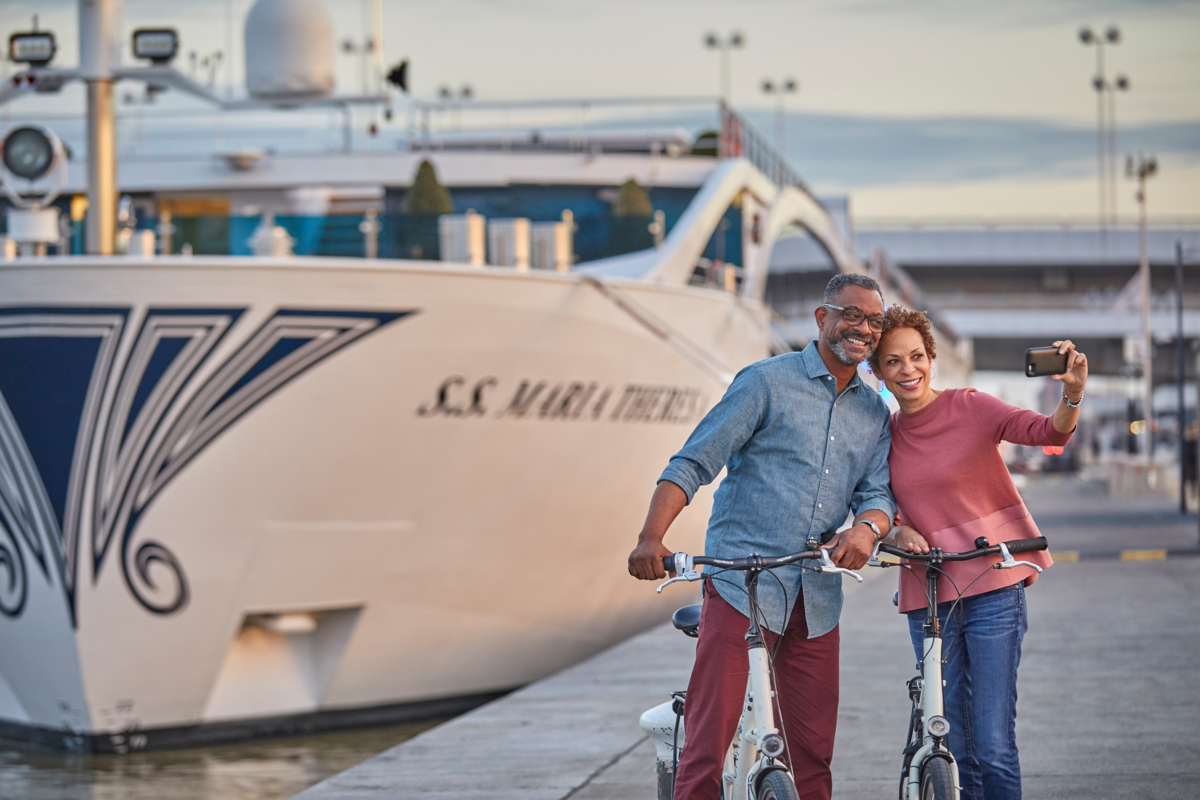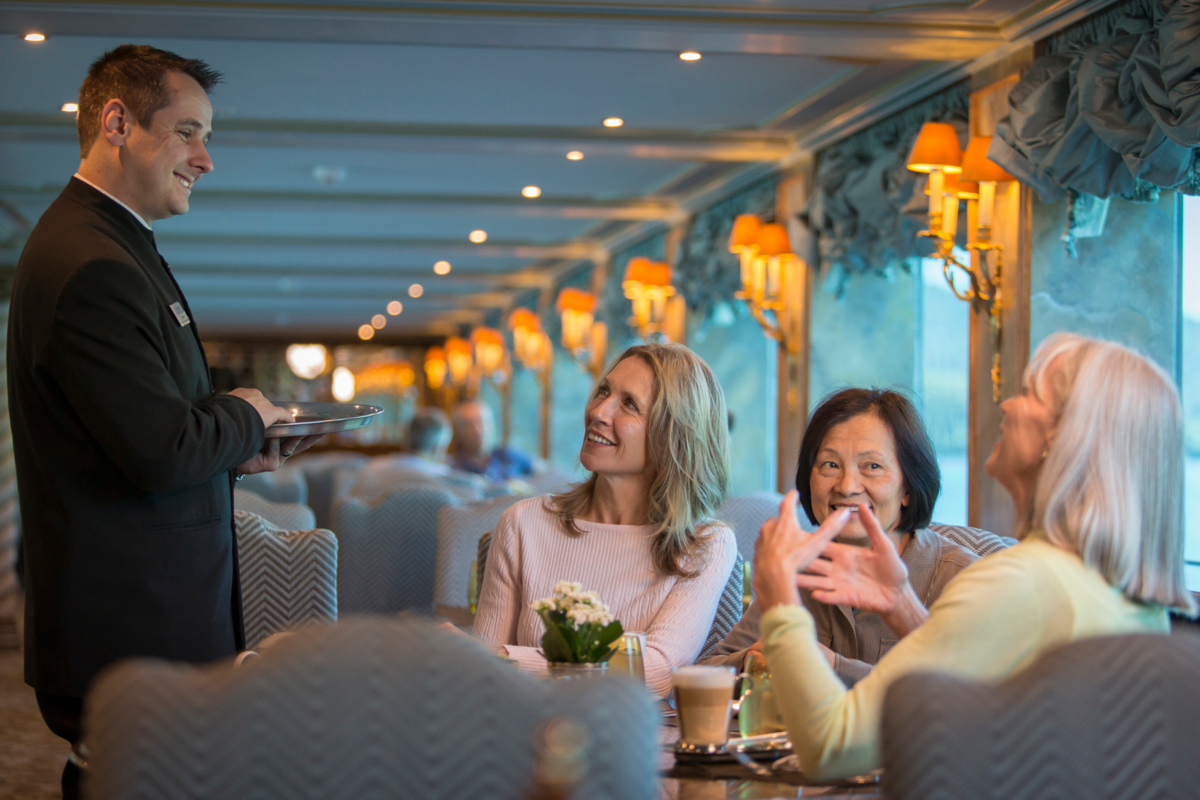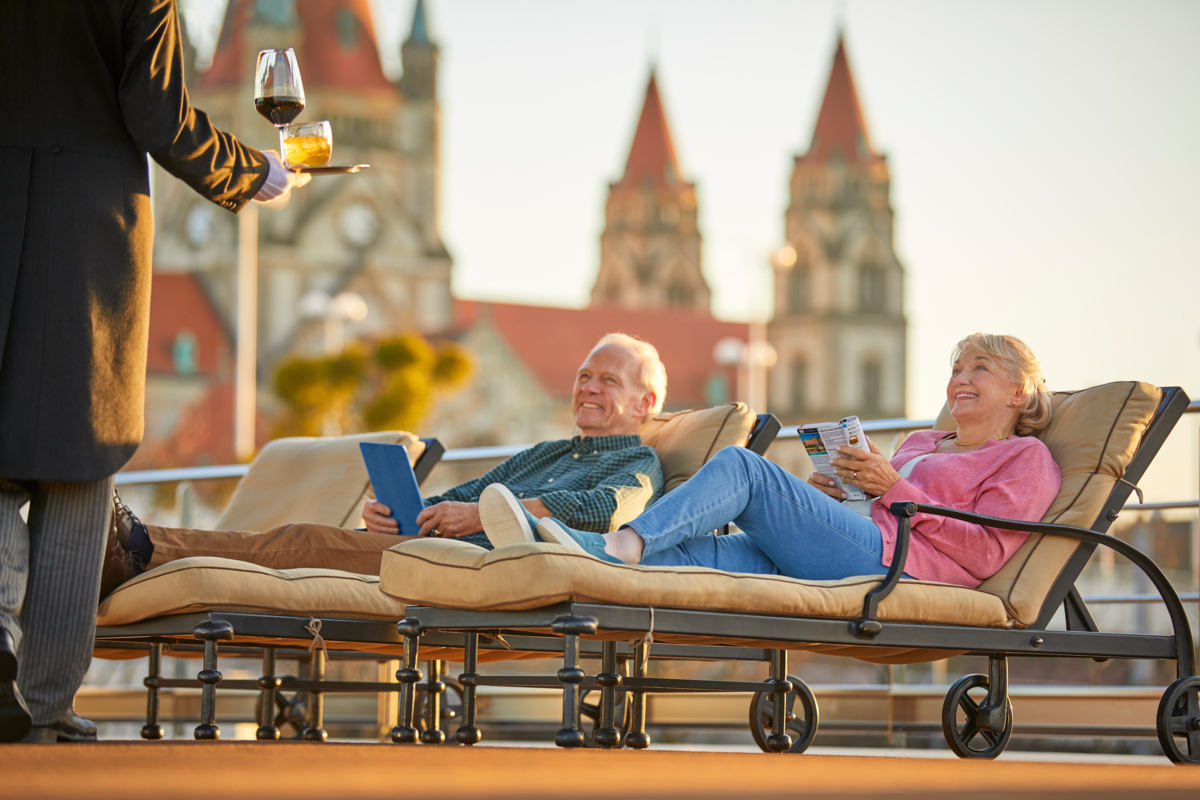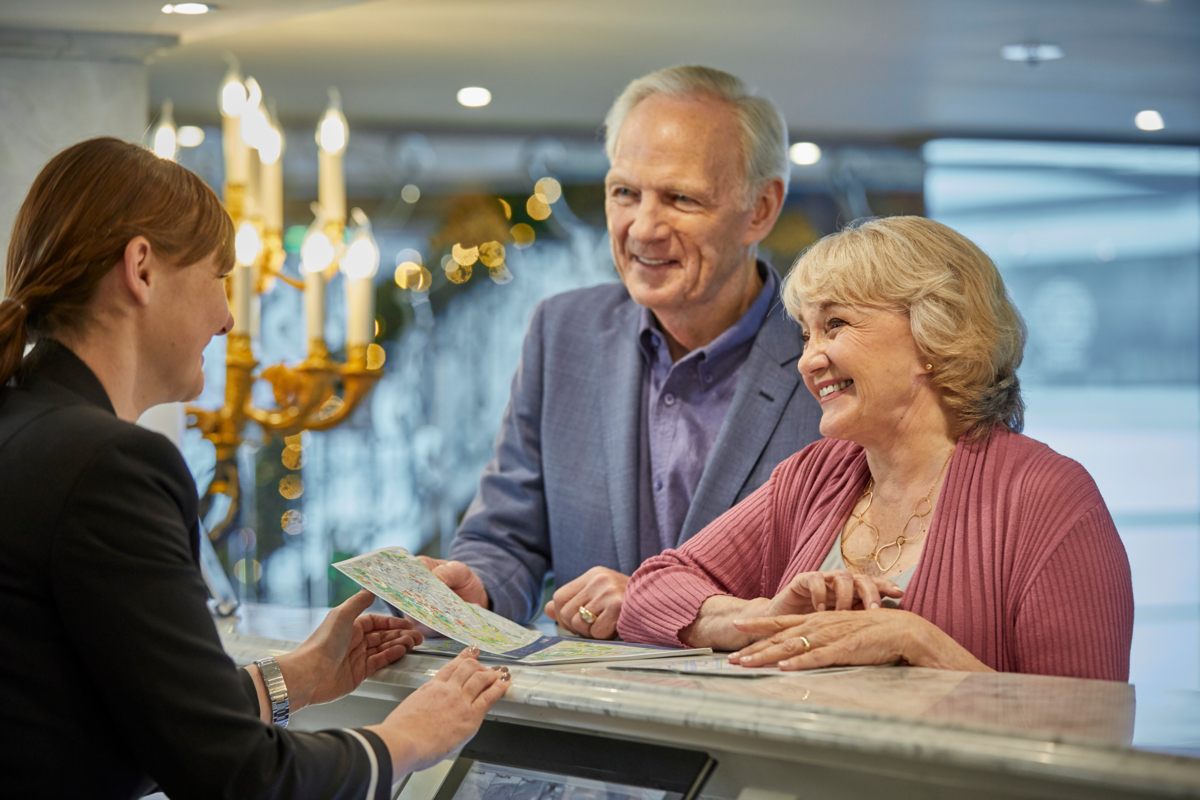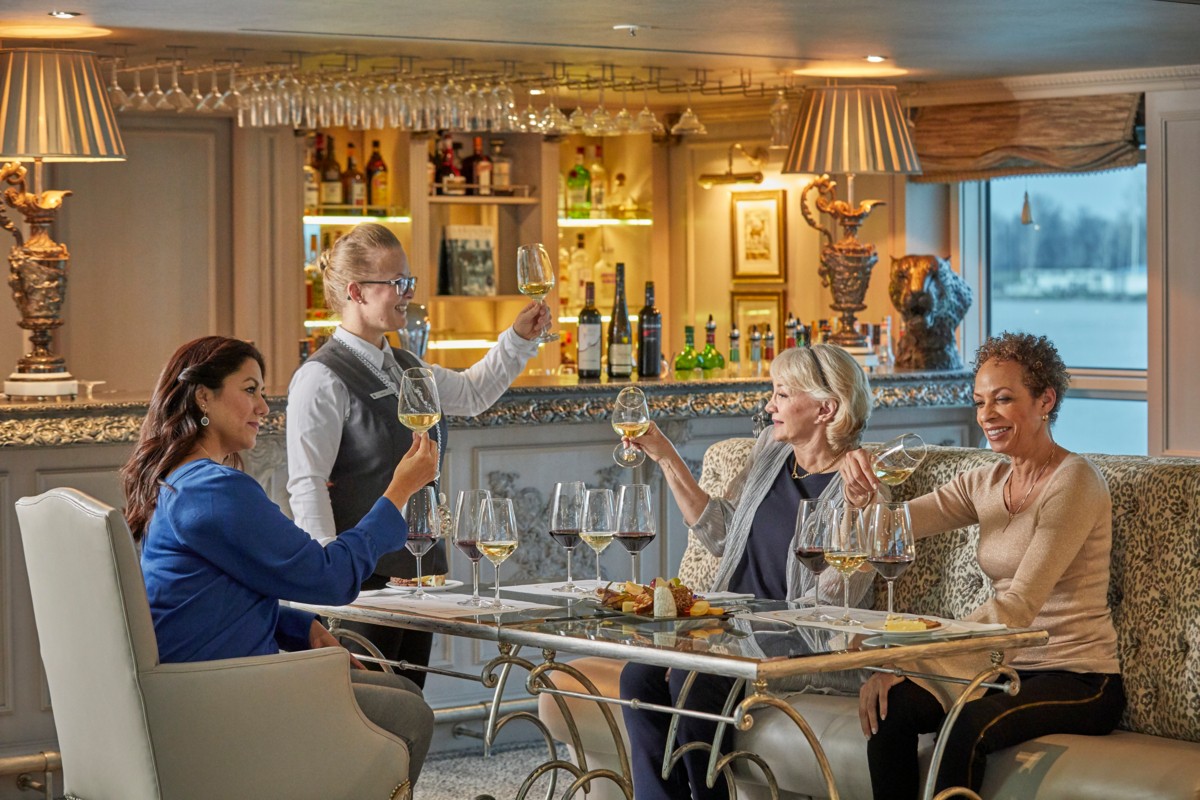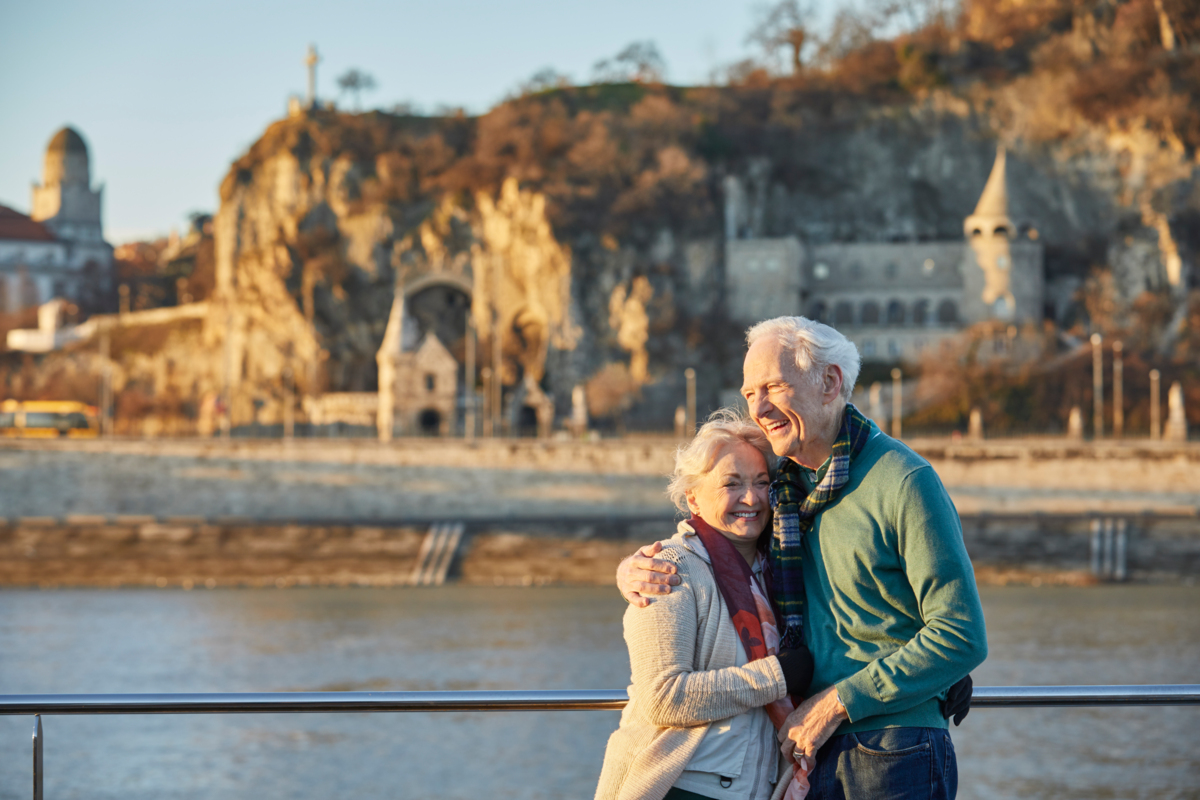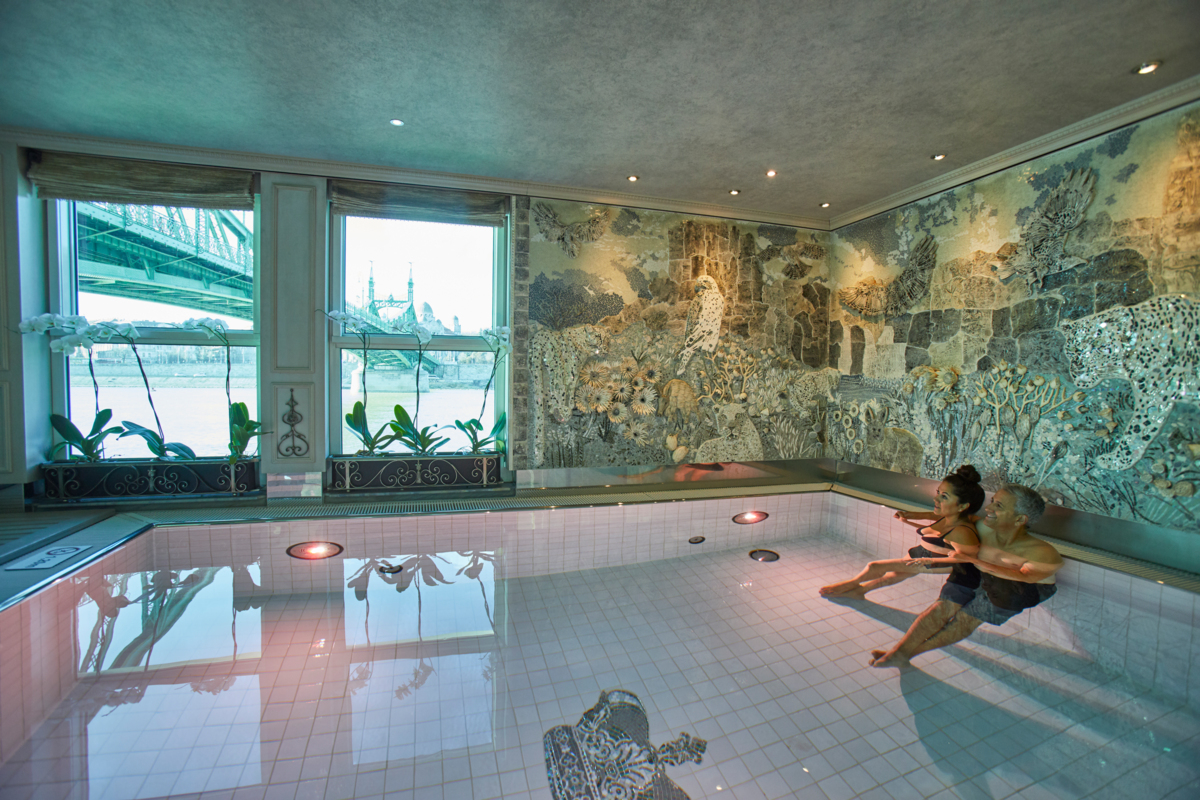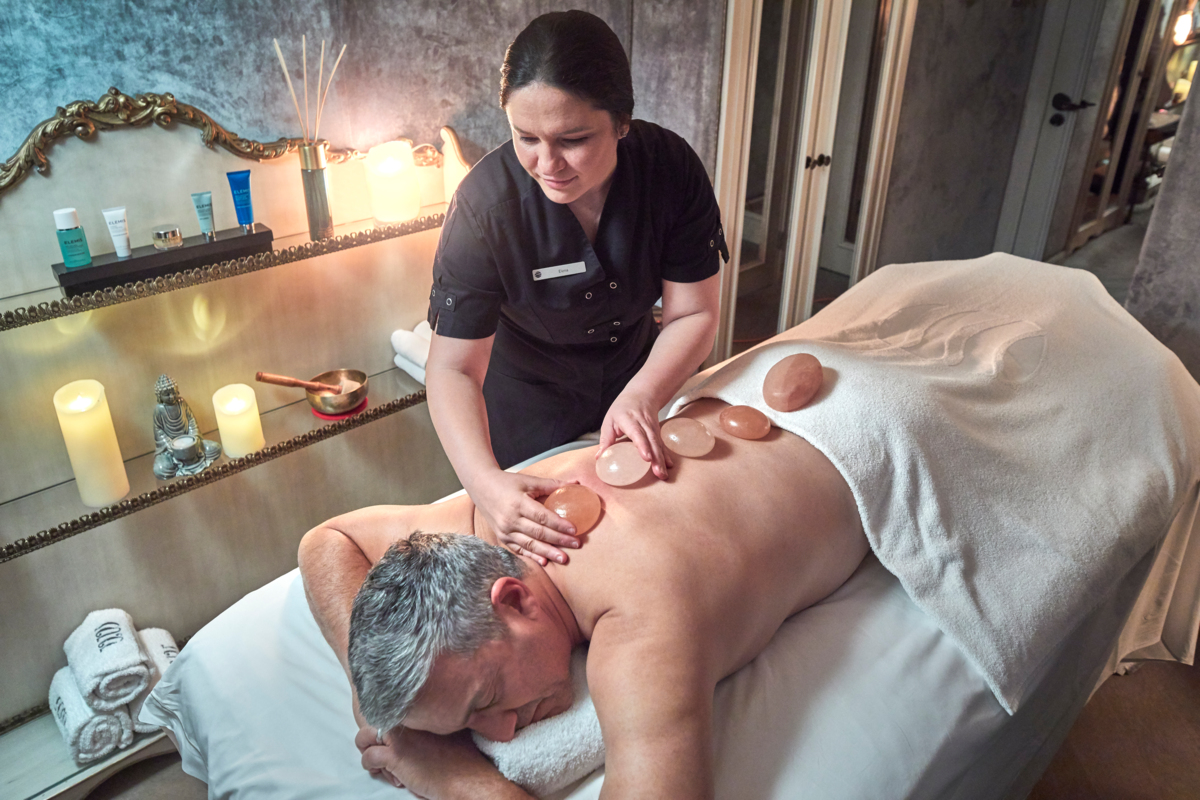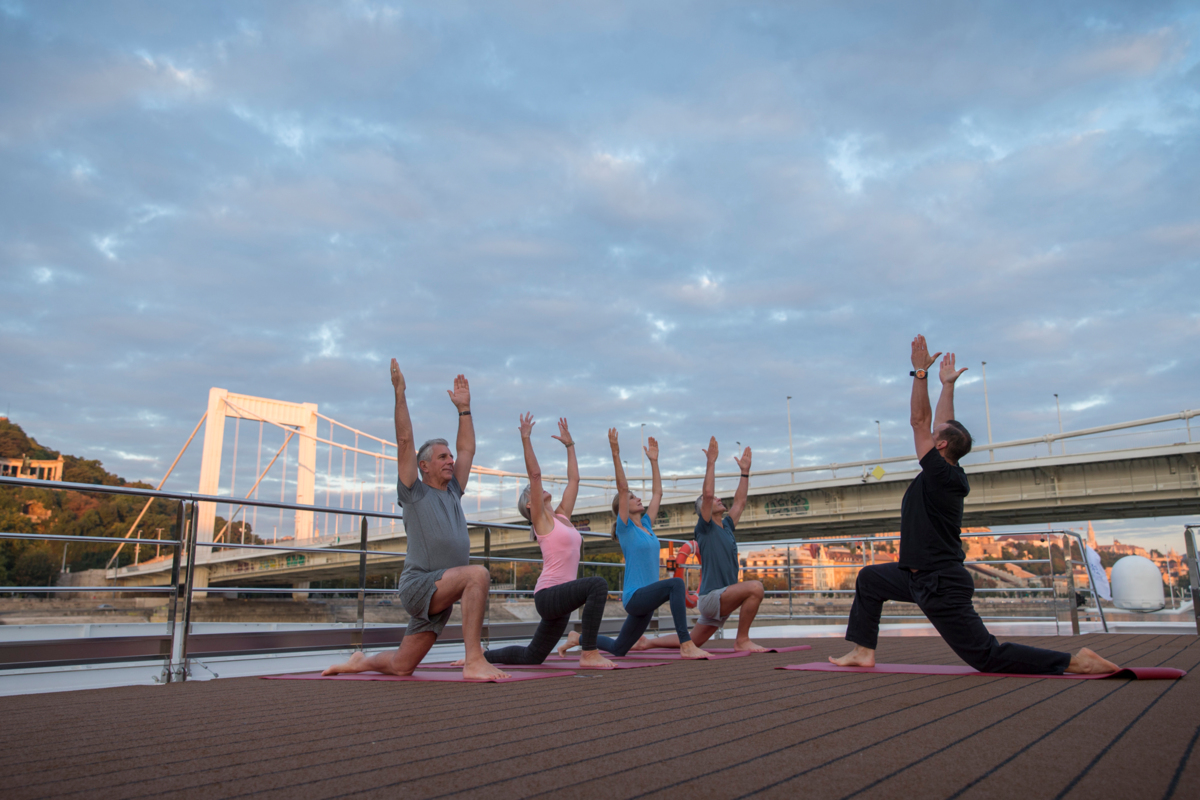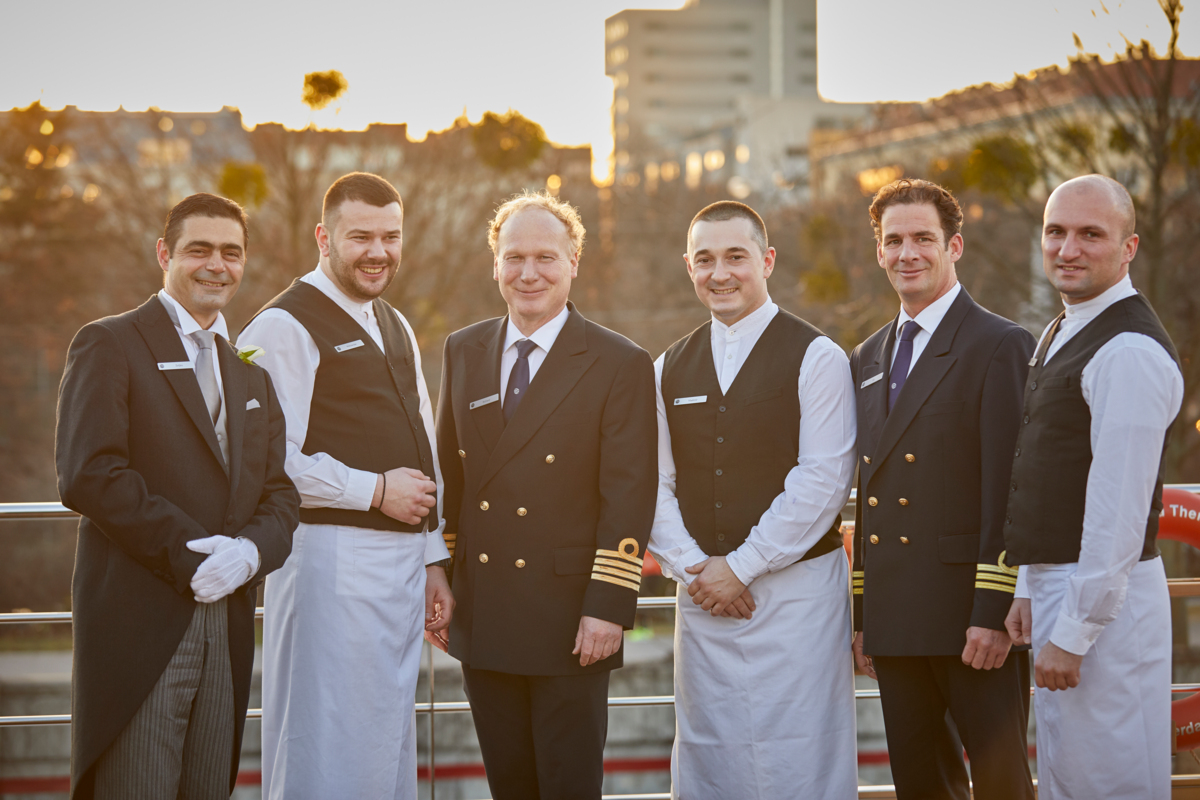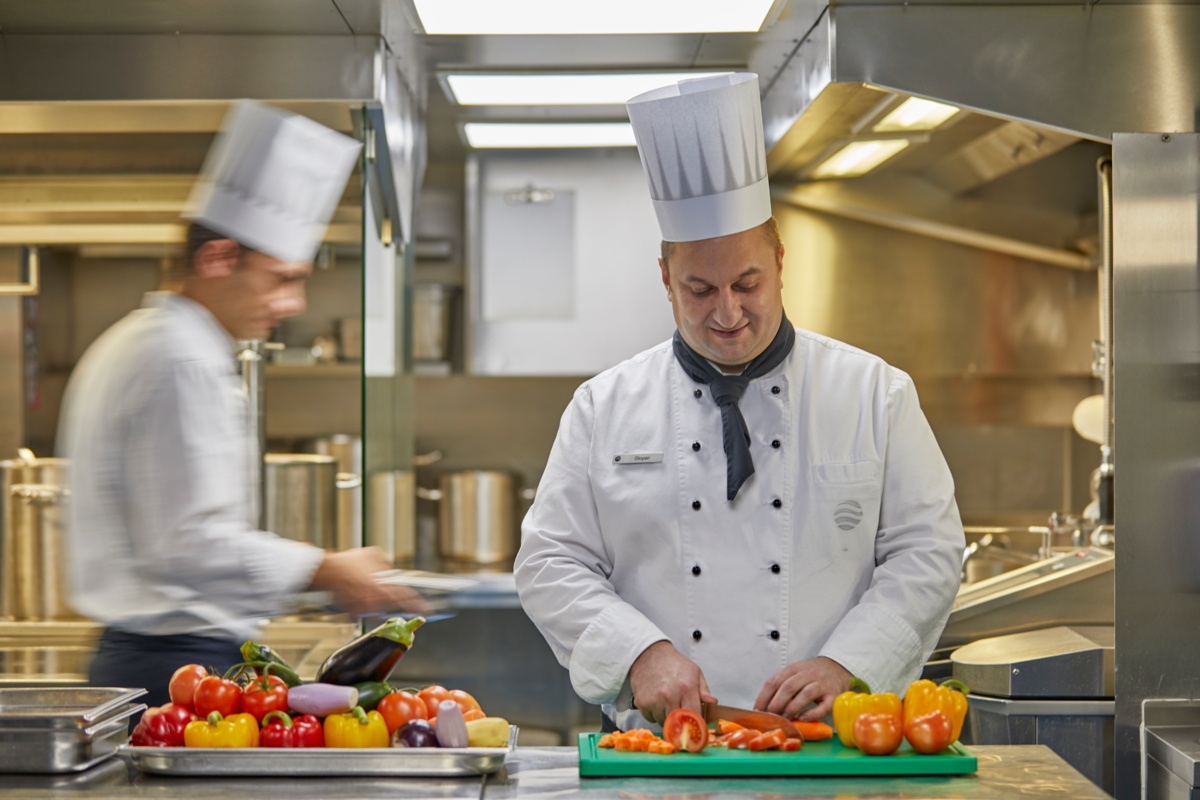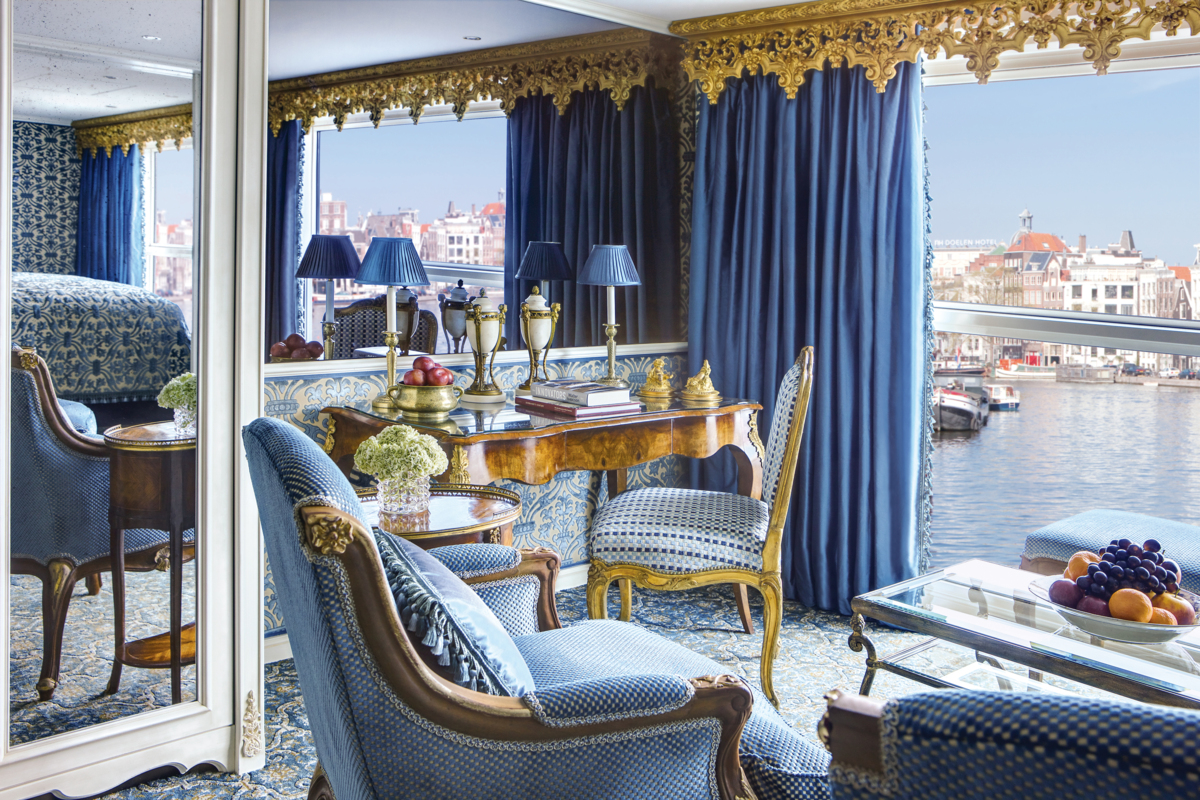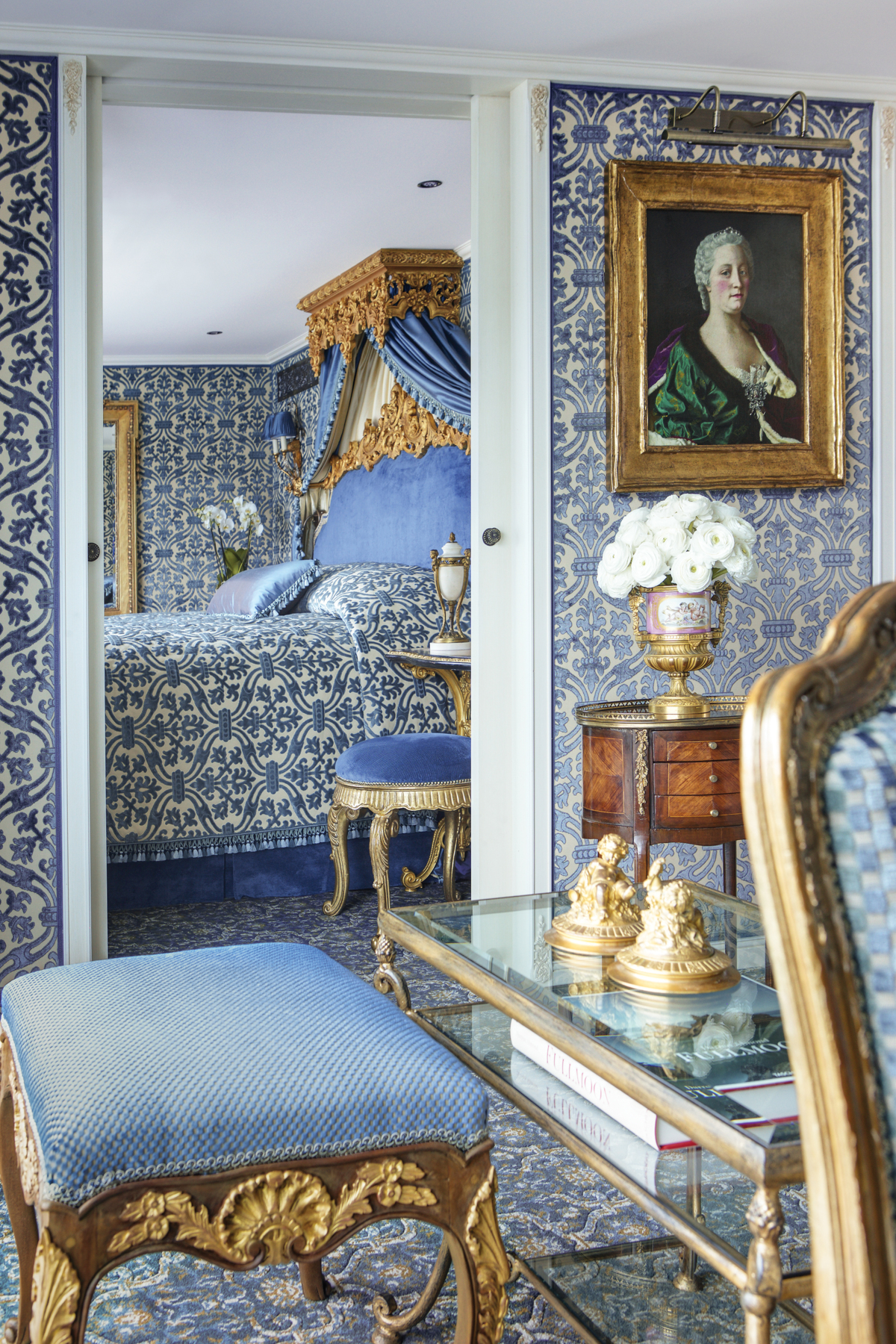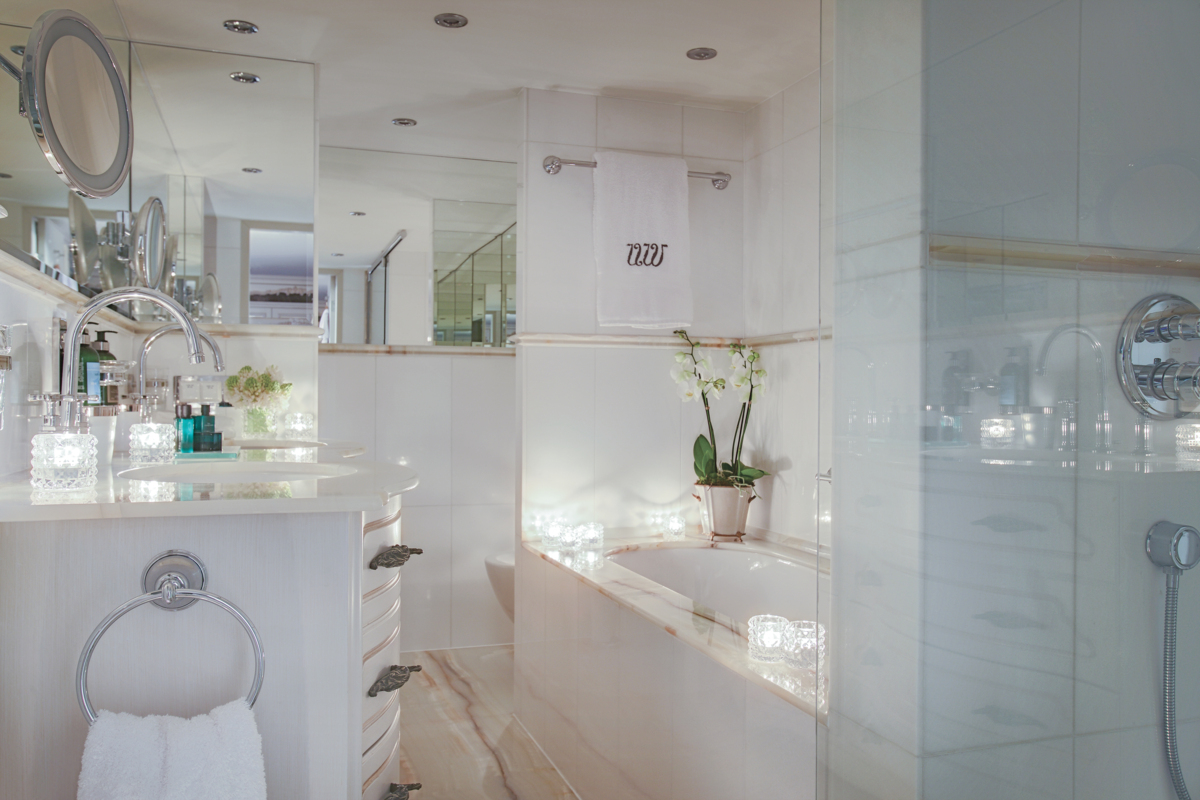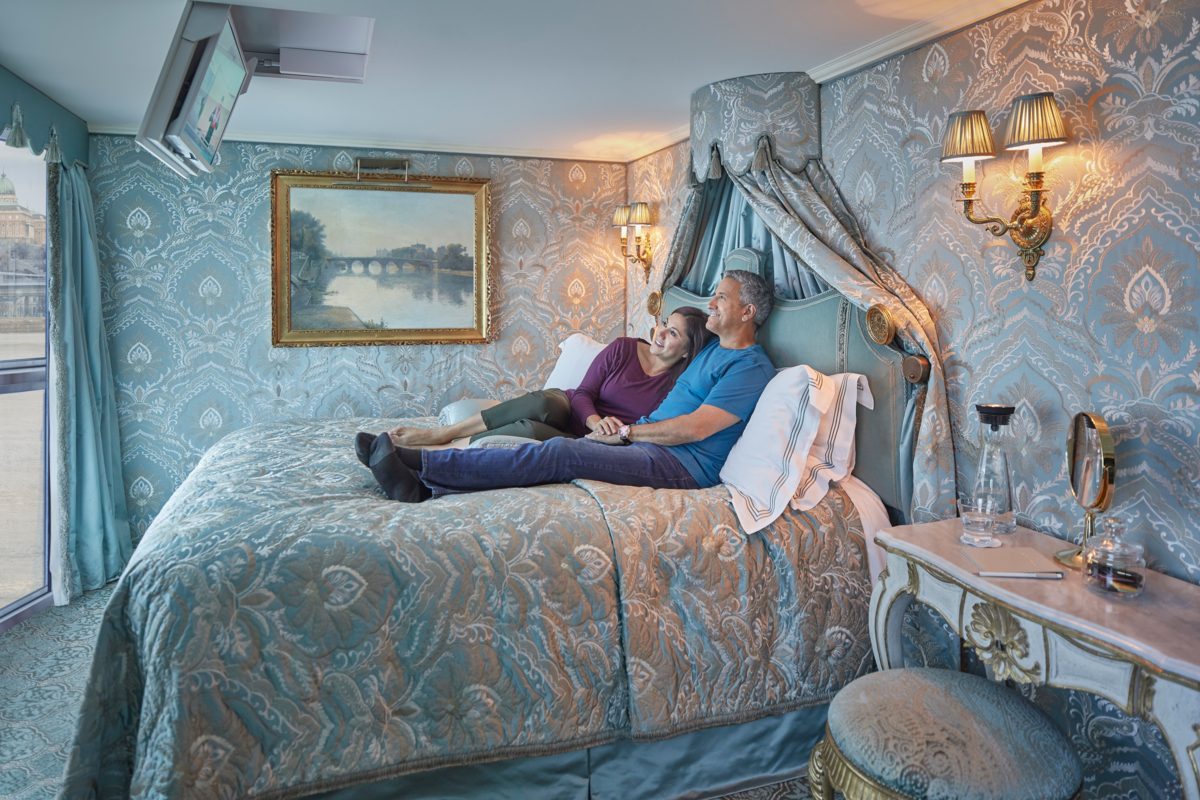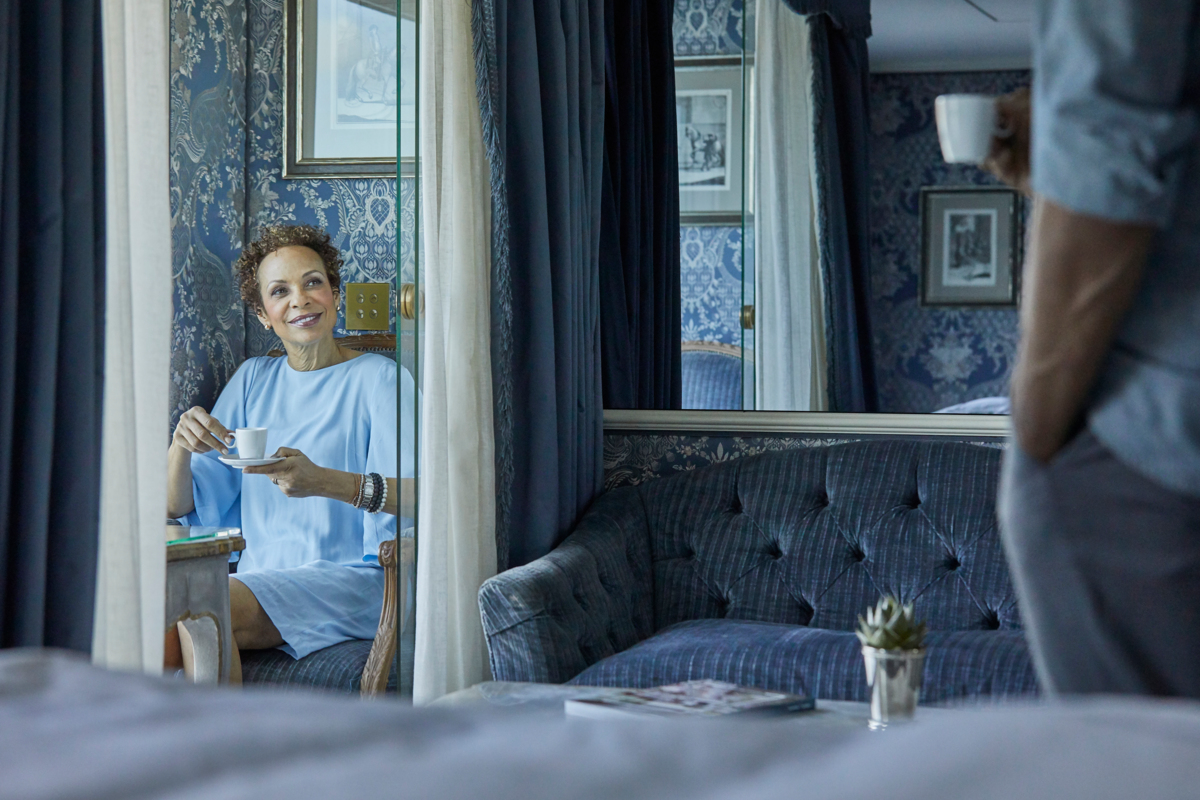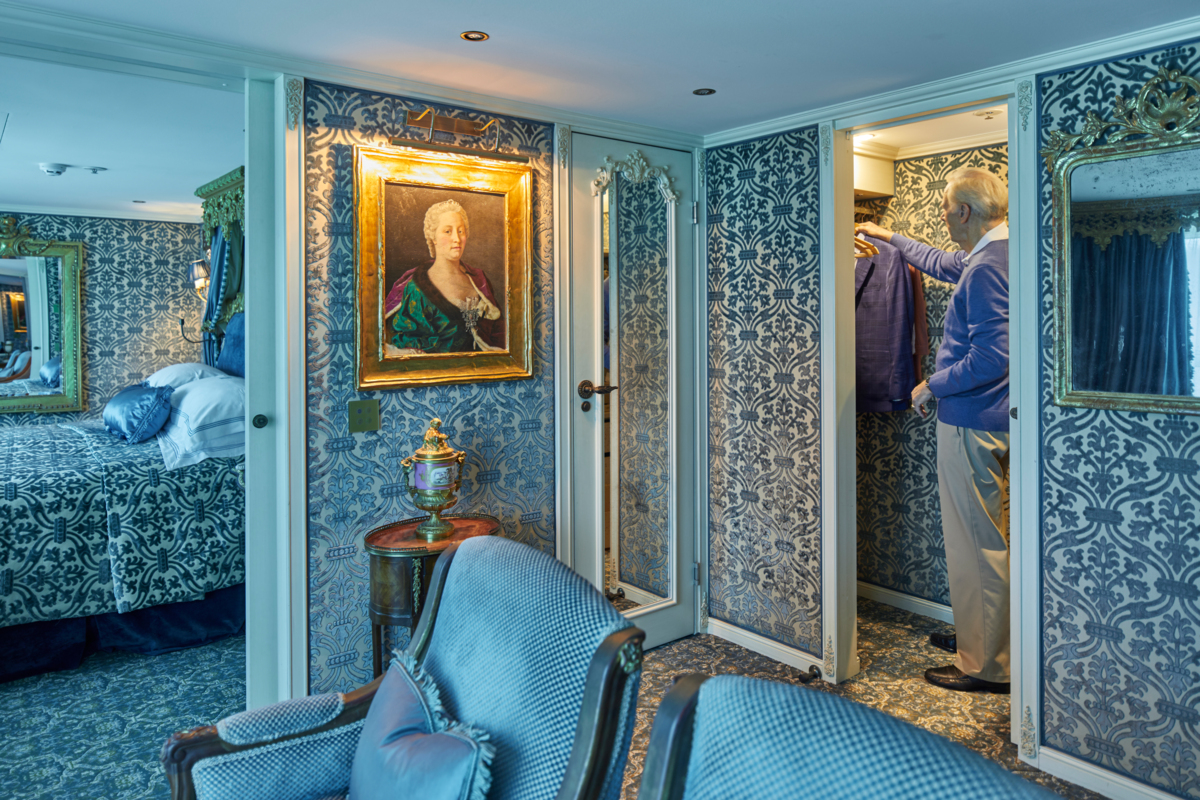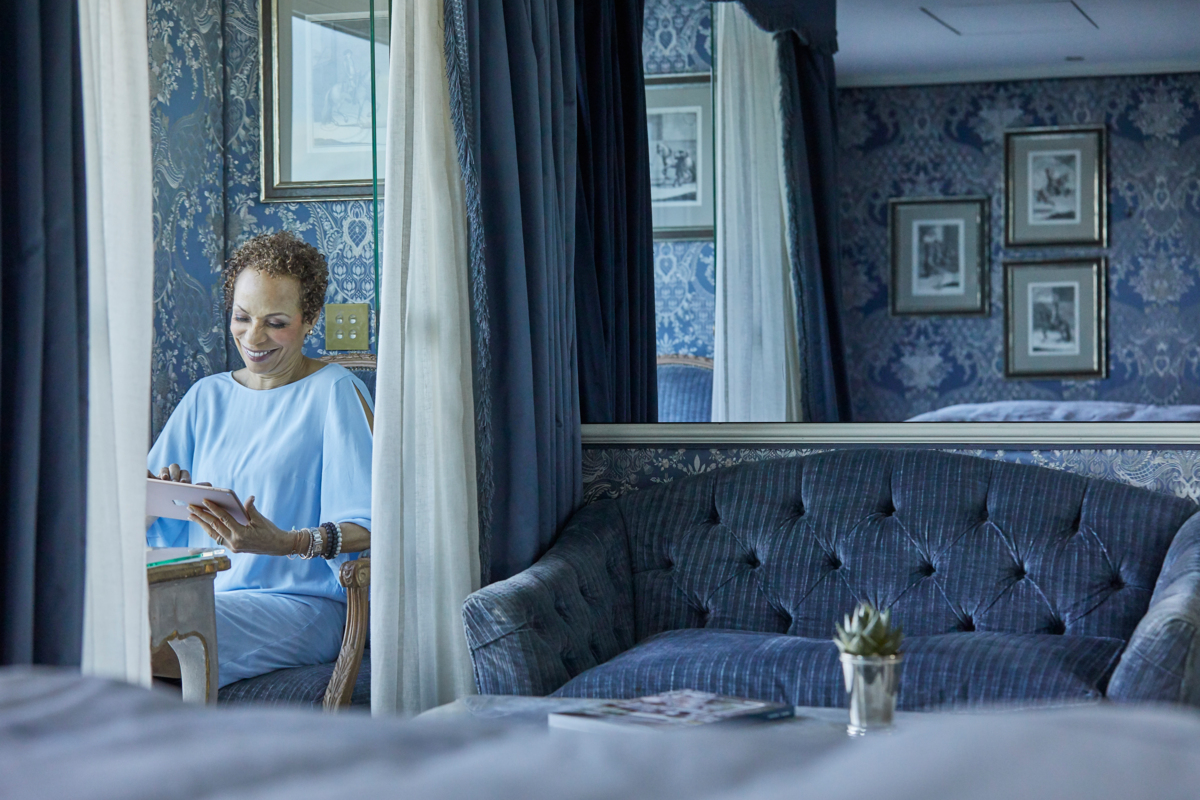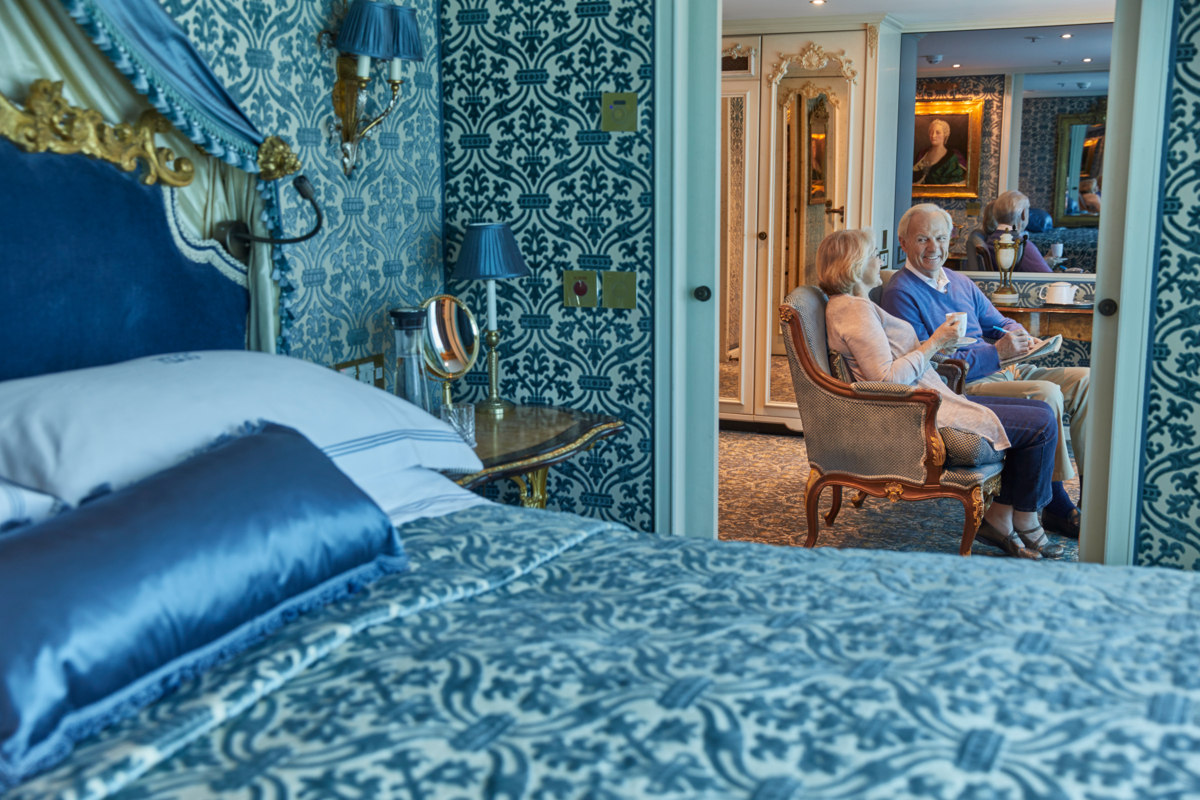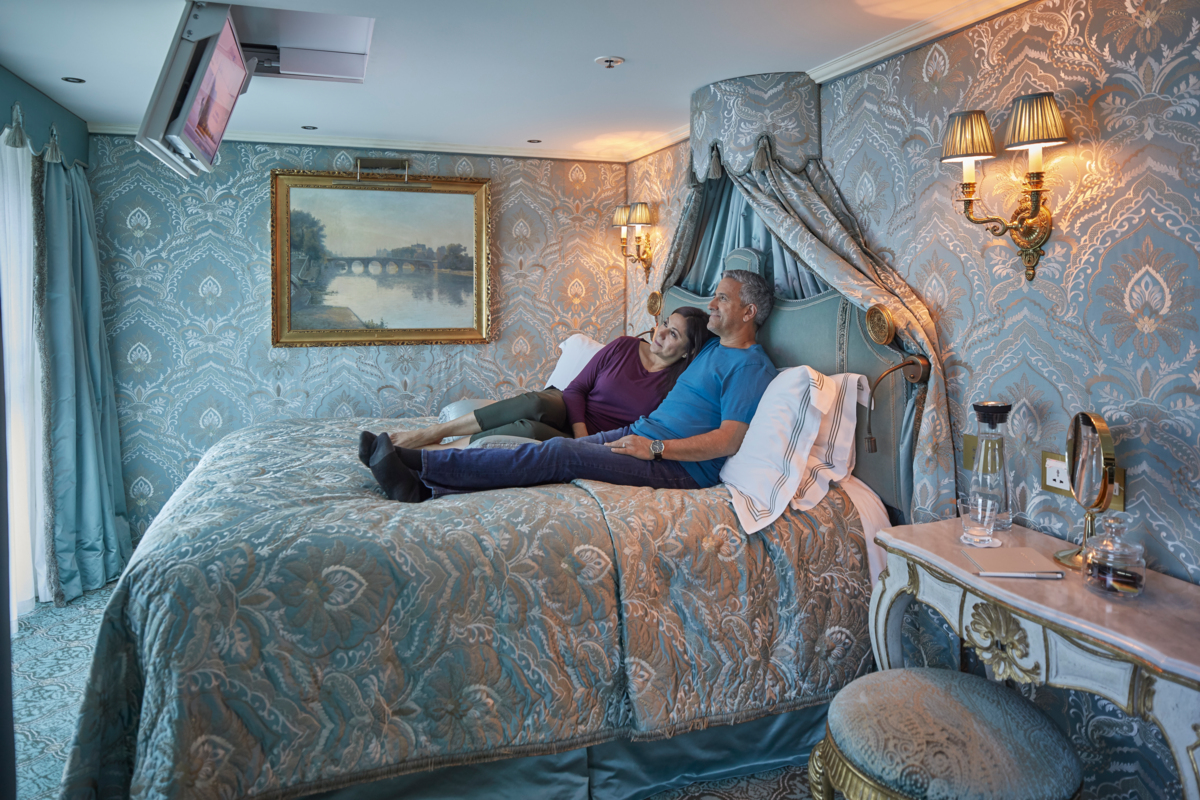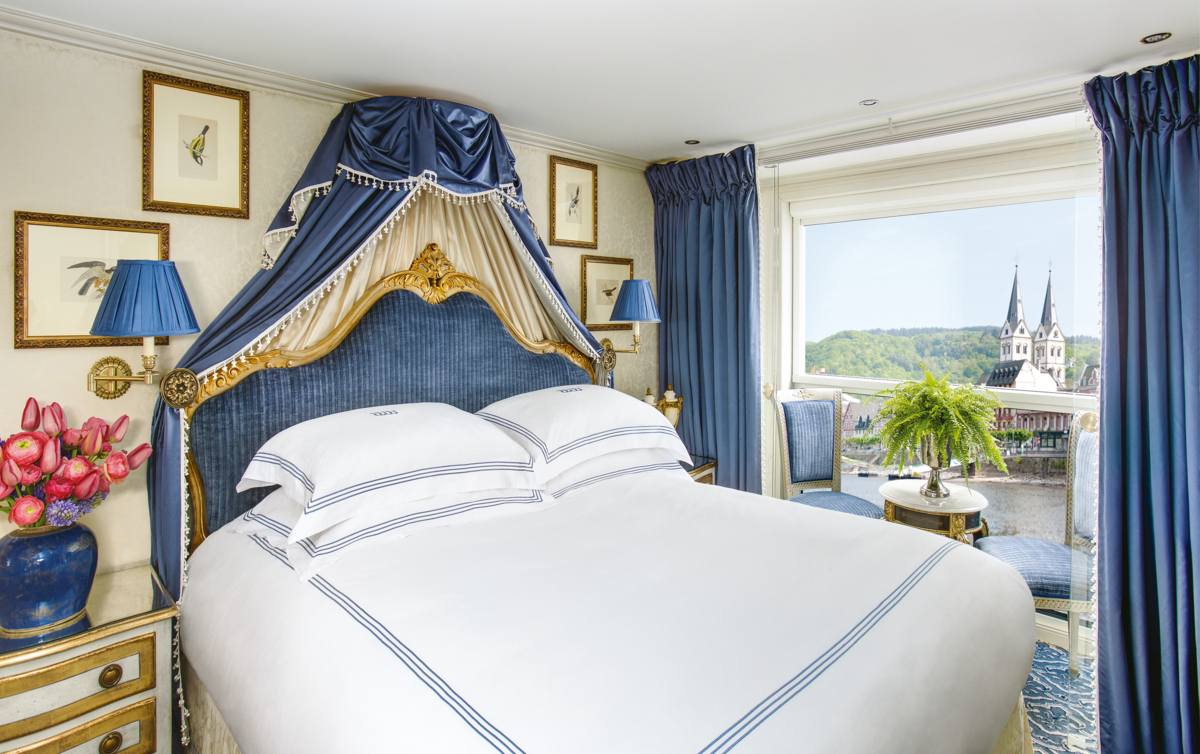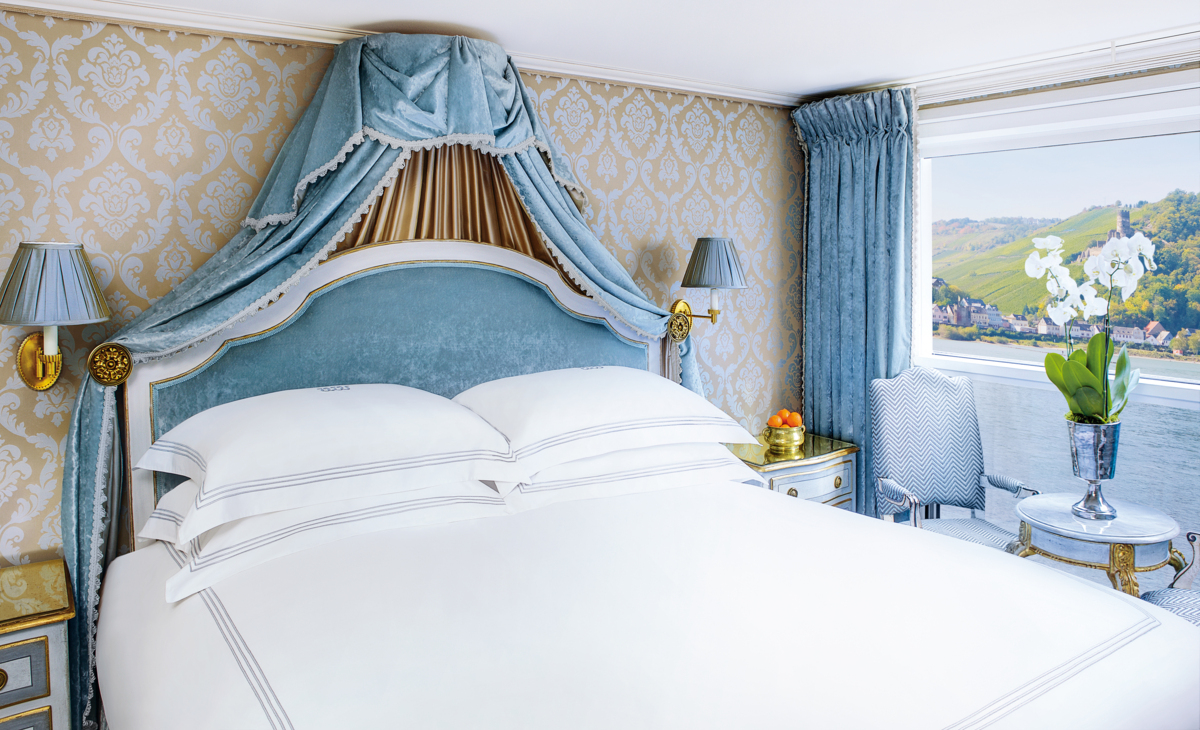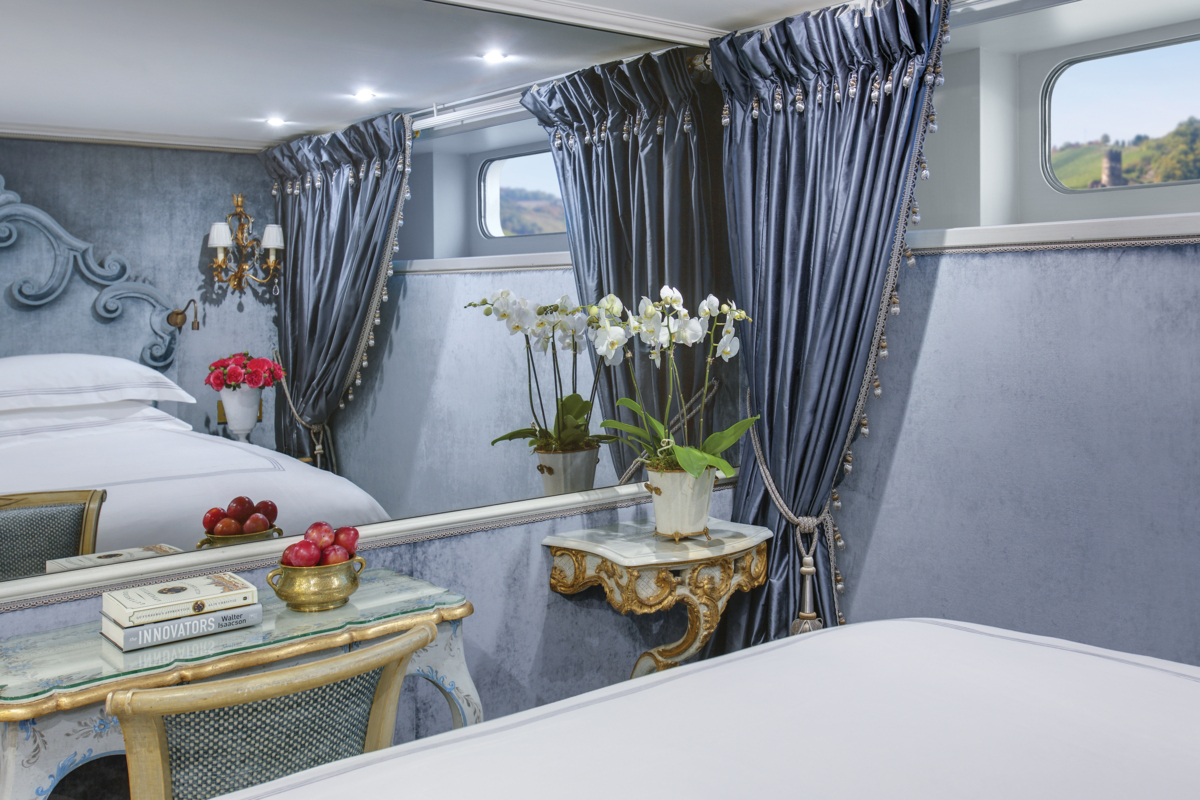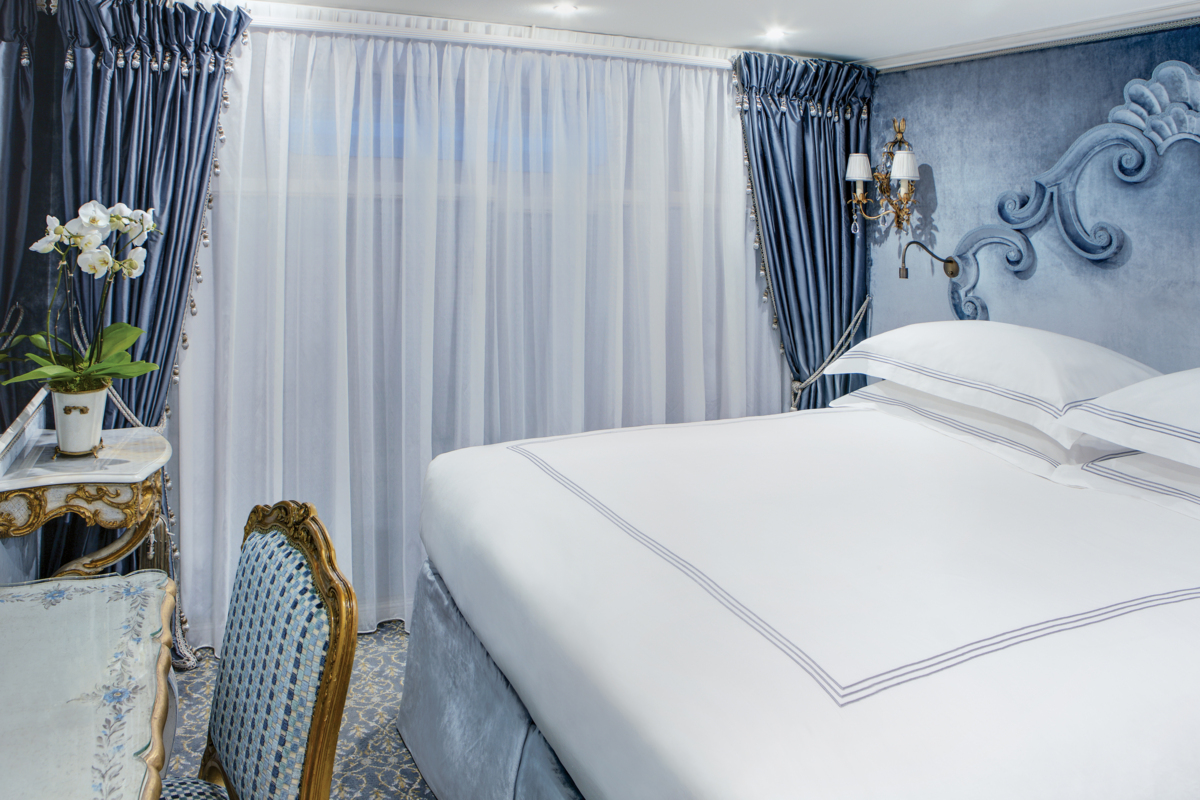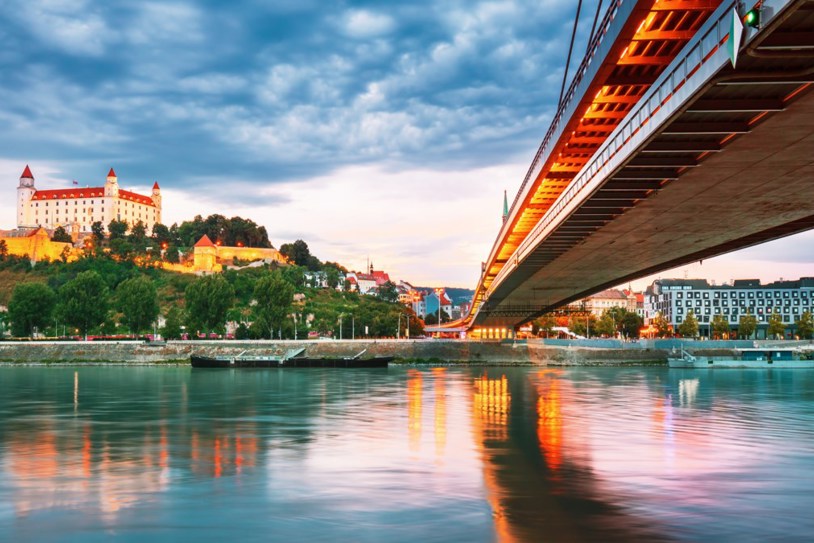
All-Inclusive River Cruises by Uniworld
If all-inclusive, luxury travel is your standard go-to, or are traveling to celebrate a milestone or special occasion, a boutique, luxury river cruise is the perfect choice. The world’s best and most awarded luxury river cruise line, for more than four decades, Uniworld has specialized in providing intimate and in-depth one-of-a-kind journeys for travelers seeking to explore the rivers of the world in exceptional style. On every all-inclusive Uniworld river cruise, you’ll be whisked away to a variety of destinations in one trip onboard a beautiful river ship. Along the way, you’ll enjoy five-star cuisine, unique local experiences, and exceptional service from the longest tenured crew in river cruising.
River Cruises
Whether you’re discovering charming towns or simply enjoying the view from the deck, you’ll explore at your own pace, all with your expert Experience Director and Experience Manager by your side so you can relax and enjoy your trip. Every detail of your river cruise is taken care of, so you can focus on what matters the most, enjoying the journey and making memories that last a lifetime.
View All River CruisesThe shimmering waters of the fabled Danube River flow for thousands of miles through the very heart of Europe, silent witness to centuries of artistic achievement and historical events. This perfectly composed journey provides an immersive cultural tasting menu of four equally beguiling countries—ideal for first-time river cruisers as well as seasoned travelers seeking to experience yet another dimension of these much-loved destinations.
- Reviews
- 34
- Average group size
- 120 passengers
- River Cruises by
- Uniworld River Cruises
- Travel style
- River Cruises

Select your date
Ships
The Original Floating Boutique Hotels - wake up to wonderful new place to explore every day, with warm and personalized service, unique design schemes
S.S. Maria Theresa
"Regal in its opulent 18th-century decor, a floating homage to the former Austrian empress....Besides indulgent dining and an elegant atmosphere, this is one of the prettiest ships out there." - Cruise Critic editors
One of Europe's most beloved and longest reigning monarchs, the great Habsburg ruler Maria Theresa, was so extraordinary that we expanded our Super ShipTM fleet in her honor. Named "Best New River Ship" by Cruise Critic editors her maiden season, the S.S. Maria Theresa features ultra-luxurious accommodations and an array of thoughtful personal touches, ensuring a truly indulgent and unforgettable voyage along the Danube and Main Rivers.
Staterooms and suites on the Hofburg Deck have balconies with floor-to-ceiling windows that, with the touch of a button, will raise the glass to create a completely enclosed conservatory. Designated suites provide triple-accommodation options.
- Inauguration
- 2015
- Rivers
- Danube
- Guests
- 150
- Staff
- 55
- Grand Suite
- 1 (410 sq ft)
- Suite
- 10 (305 sq ft)
- Deluxe Balcony
- 18 (194 sq ft)
- French Balcony
- 36 (194 sq ft)
- Classic
- 10 (162 sq ft)
- Length
- 443 ft
- Width
- 37.5 ft
- Lavishly appointed riverview stateroom (410 sq ft - 38 sq m) with a French balcony
- Handcrafted Savoir® Beds of England, walk-in closet, hair dryer, safe, individual thermostat, flat-screen TV with infotainment center and satellite, and bottled water
- The Grand Suite offers extra benefits, including a separate spacious living room, bathroom with a separate rain shower and tub, and secluded toilet and bidet area
- Marble bathroom includes Asprey bath and body products, plush towels, towel warmers, backlit magnifying mirror, heated mirrors, comfortable bathrobes and slippers
- Additional amenities and service include: in-suite butler service; packing and unpacking assistance; in-room breakfast; daily fruit and cookie plate, and an elegant evening snack; Nespresso coffee machine and fine teas; fully stocked mini bar; bottle of wine upon arrival; shoe shine; and free laundry service
- Lavishly appointed riverview stateroom (305 sq ft - 28.3 sq m) with an enclosed balcony with floor-to-ceiling windows
- Handcrafted Savoir® Beds of England, built-in closet, hair dryer, safe, individual thermostat, flat-screen TV with infotainment center and satellite
- Marble bathroom with Asprey bath and body products, plush towels, towel warmer, comfortable bathrobes and slippers, heated mirror and backlit magnifying mirror
- Additional amenities and service include: in-suite butler service; packing and unpacking assistance; in-room breakfast; daily fruit and cookie plate, and an elegant evening snack; Nespresso coffee machine and fine teas; fully stocked mini bar; bottle of wine upon arrival; shoe shine; and free laundry service
- Lavishly appointed riverview stateroom (194 sq ft - 18 sq m) with an enclosed balcony with floor-to-ceiling windows
- Handcrafted Savoir® Beds of England, built-in closet, hair dryer, safe, individual thermostat, flat-screen TV with infotainment center and satellite
- Marble bathroom with Asprey bath and body products, plush towels, towel warmer, comfortable bathrobes and slippers, heated mirror and backlit magnifying mirror
- Lavishly appointed riverview stateroom (194 sq ft - 18 sq m) with a French balcony
- Handcrafted Savoir® Beds of England, built-in closet, hair dryer, safe, individual thermostat, flat-screen TV with infotainment center and satellite
- Marble bathroom with Asprey bath and body products, plush towels, towel warmer, comfortable bathrobes and slippers, heated mirror and backlit magnifying mirror
- Lavishly appointed riverview stateroom (162 sq ft - 15 sq m)
- Handcrafted Savoir® Beds of England, built-in closet, hair dryer, safe, individual thermostat, flat-screen TV with infotainment center and satellite
- Marble bathroom with Asprey bath and body products, plush towels, towel warmer, comfortable bathrobes and slippers, heated mirror and backlit magnifying mirror
- Note: windows in these staterooms are situated at the water line
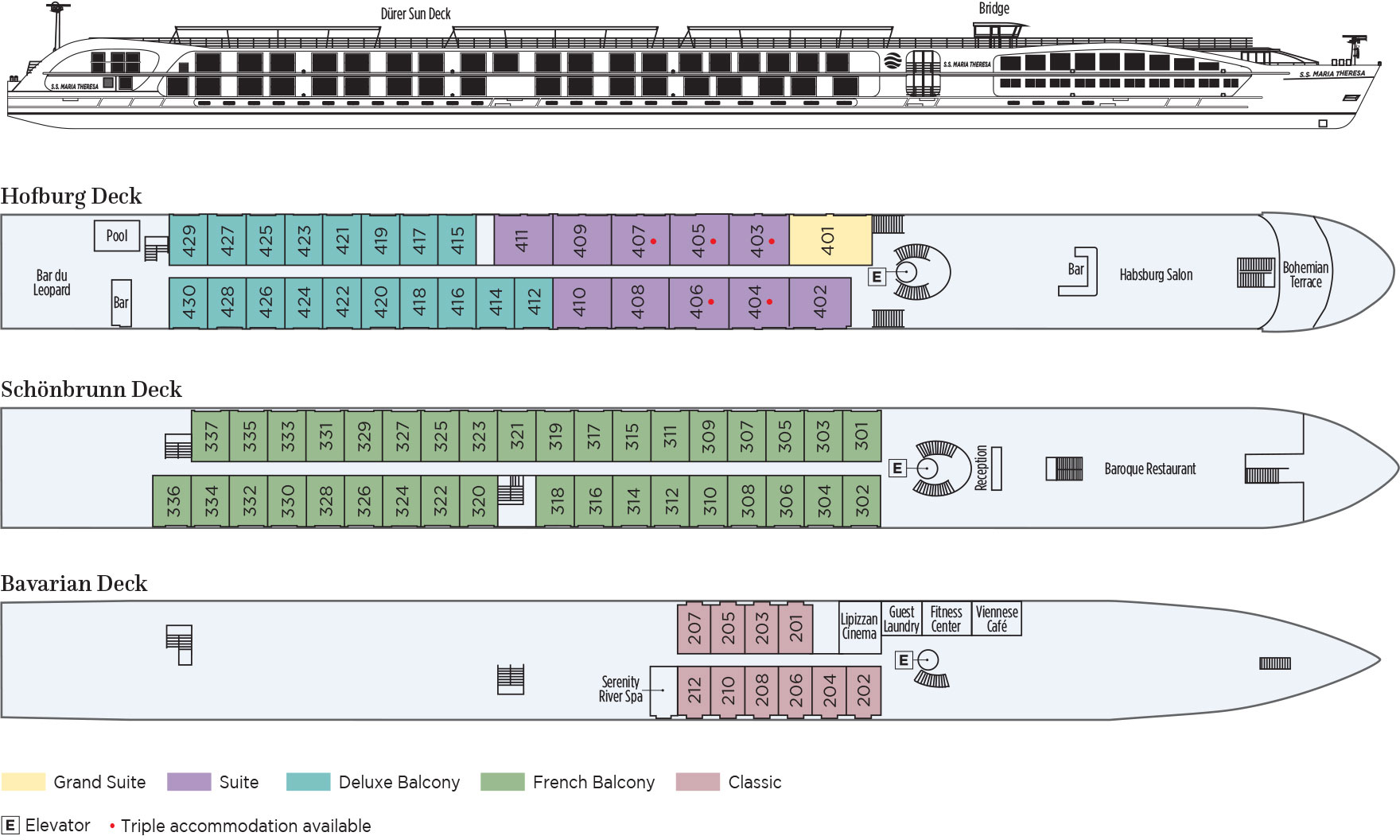
Included Highlights
Top Highlights
Authentic Dining
Excursions
Accommodations
Experiences
Cruise: Western & Central Europe
Dining
When dining onboard, you’ll be treated to world-class cuisine made from fresh ingredients, locally sourced from the destinations you visit.
Complimentary Beverages
All beverages are included during your cruise. Complimentary beverages onboard include wine, beer, spirits, specialty coffee and tea, soft drinks, and mineral water.
Gratuities
Gratuities for all onboard personnel including the ship staff, crew, and Cruise Manager, are included.
Curated Excursions
Complementary and comprehensive shore excursions led by local English-speaking experts designed to provide the best possible experiences ashore.
Scheduled Airport Transfers
Complementary airport arrival and departure group transfers provided for flights that meet guidelines.
Uniworld sails rivers in several Western & Central European Countries, including Austria, Belgium, Croatia, France, Germany, Italy, Liechtenstein, Luxembourg, Netherlands, Portugal, Spain, and Switzerland
- Official Languages: Croatian (Croatia), Dutch (Belgium, Netherlands), French (Belgium, France, Switzerland), German (Austria, Belgium, Germany, Liechtenstein, Luxembourg, Switzerland), Italian (Italy, Switzerland), Luxembourgish (Luxembourg), Portuguese (Portugal), Spanish (Spain), Romansh (Switzerland)
- Capital Cities: Vienna (Austria), Brussels (Belgium), Zagreb (Croatia), Paris (France), Berlin (Germany), Rome (Italy), Vaduz (Liechtenstein), Luxembourg City (Luxembourg), Amsterdam (Netherlands), Lisbon (Portugal), Madrid (Spain), Bern (Switzerland).
- Time Zones: Western European Time (EET), UTC+0, and Western European Summer Time (EEST), UTC+1, Central European Time (CET) UTC+1, Central European Summer Time (CEST) UTC+2 during daylight saving time.
- Currencies:
Austria: Euro (EUR) €
Belgium: Euro (EUR) €
Croatia: Croatian Kuna (HRK) kn
France: Euro (EUR) €
Germany: Euro (EUR) €
Italy: Euro (EUR) €
Liechtenstein: Swiss Franc (CHF) CHF
Luxembourg: Euro (EUR) €
Netherlands: Euro (EUR) €
Portugal: Euro (EUR) €
Spain: Euro (EUR) €
Switzerland: Swiss Franc (CHF) CHF
All Uniworld river cruises require a passport with at least two blank pages for entry stamps. Must be valid for at least six months beyond the conclusion of your trip.
All U.S. passport holders are required to have a valid Electronic Travel Authorization (ETA) to enter or transit through the United Kingdom, including England, Scotland, Wales, and Northern Ireland. Apply for Your 2025 UK Electronic Travel Authorization (ETA): Visit this link for more info.
Visa Requirements: Access the latest entry requirements for all your destinations with our user-friendly Destination Entry Guide. Powered by CIBT, the leading authority in travel visas and US passports; check back as often as you like before your trip to ensure you have everything you need before you depart.
- Austria: Austria features a temperate continental climate with cold winters and mild summers. Precipitation is evenly distributed throughout the year, with more rain in the summer months.
- Belgium: Belgium has a temperate maritime climate characterized by mild winters and cool summers. Rainfall is distributed evenly throughout the year.
- Croatia: Croatia has a varied climate, with continental influences inland and a Mediterranean climate along the coast. Summers are hot and dry, while winters are mild along the coast but colder inland with snowfall.
- France: France experiences a variety of climates, ranging from oceanic and Mediterranean to alpine. Generally, it has mild winters and warm summers, but specific regions may have different weather patterns.
- Germany: Germany has a temperate seasonal climate with moderate rainfall throughout the year. Winters are usually cold, while summers are mild to warm.
- Italy: Italy has a diverse climate, with Mediterranean conditions prevailing along the coast and continental climates in the interior. Summers are typically hot and dry, while winters are mild in the south and colder in the north.
- Liechtenstein: Liechtenstein has a continental climate with cold winters and warm summers. Precipitation is moderate throughout the year, with slightly more rain in the summer months.
- Luxembourg: Luxembourg has a temperate maritime climate with mild winters and cool summers. Rainfall is evenly distributed throughout the year.
- The Netherlands: The Netherlands has a maritime climate influenced by the North Sea, with mild winters and cool summers. Rainfall is frequent throughout the year.
- Portugal: Portugal has a Mediterranean climate with hot, dry summers and mild, wet winters. The southern region experiences hotter temperatures compared to the north.
- Spain: Spain has a diverse climate, ranging from Mediterranean in the south to maritime and continental in the north. Summers are typically hot and dry, while winters vary from mild to cold depending on the region.
- Switzerland: Switzerland has a temperate climate with distinct regional variations. The Alpine region experiences cold winters and cool summers, while the lowlands have milder temperatures with more precipitation throughout the year.
Baggage Allowance
Baggage storage space onboard is limited. For their own comfort and convenience, Uniworld requests guests bring one (1) suitcase per person and one (1) carry-on bag per person (excluding purses). Airline baggage restrictions change frequently. Guests should check on the specific air carrier’s website for limitations concerning baggage weight, baggage size, carry-on regulations, and excess or overweight baggage charges.
Packing Tips for a River Cruise
Packing for a river cruise will vary depending on the duration of the trip, the time of year, and the activities planned. Here is a general packing list to help you get started:
- A valid and current passport.
- A copy of your travel insurance and any necessary travel documents.
- Your Cruise Travel Companion, easily accessible should you need to reference it.
- Prepare for a variety of weather conditions, depending on your travel season and the regions through which you will be cruising. Layering clothing items is always your best bet, as this allows you to adjust to most temperatures, by removing or adding items throughout the day.
- Comfortable, sporty, smart-casual daywear is fine both onshore and onboard. Everyday slacks, khakis, walking shorts and everyday skirts/dresses are recommended. For warmer months, bring lightweight clothing that can be layered. For early spring and late fall departures, heavier cotton or wool tops and long-sleeved shirts, and pants are perfectly suitable.
- Comfortable walking shoes with good ankle support. You will participate in a significant amount of walking over uneven terrain during your time ashore.
- A lightweight waterproof jacket (preferably a hooded one) for all seasons, and a heavier weight jacket for colder temperatures and destinations.
- Evening wear: Resort-type wear is perfectly suitable. Men may want to bring a sport jacket for dressier venues and for special events onboard such as the Captain’s Welcome and Farewell festivities. Women may wish to bring a cocktail dress or two for finer dining or entertainment experiences.
Laundry Services Onboard
A launderette containing a self-service washing machine, dryer, and iron is available for your use while aboard the ship. The ship also provides washing, drying, and ironing services for a fee. There are no dry-cleaning facilities.
Electrical Currency on European Ships
Electrical current is 220V, the European standard. To accommodate guests’ needs, each stateroom or suite has one 110V outlet.
Using a Hair Dryer Onboard
Every stateroom or suite bathroom is stocked with a hair dryer, bath and body products, and a luxurious bathrobe for each guest.
Air Conditioning
Every stateroom and suite has an individual thermostat for air-conditioning and/or heat.
Connecting to the Internet & Wi-Fi
Complimentary Wi-Fi is available.
From visiting a museum without the crowds to an after-hours tour of a famous landmark, these included, once-in-a-lifetime experiences are arranged privately for Uniworld guests. All shore excursions are carefully coordinated to the ship’s daily schedule. Each motorcoach or walking group has its own English-speaking local expert.
Masterpiece Collection (Additional, Optional Experiences)
Uniworld’s curated Masterpiece Collection of optional excursions go above and beyond the included experiences and are available for an additional charge.
We highly recommend having travel insurance that covers medical expenses while abroad.
Spa Treatments & Massages While Cruising*
Spa treatments and massage services are available onboard the ship.
Special Dietary Needs
Please notify GET or Uniworld if you have special dietary concerns or considerations that need to be considered while traveling. Uniworld staff will do their best to ensure that your request is accommodated, but GET cannot guarantee that requests can be met in all cases.
Mobility Concerns
Passengers must advise GET at time of booking of any physical, medical, or other special needs that require accommodation.
Uniworld does not employ staff nurses or doctors onboard its ships, nor can they provide personal medical or mobility devices (such as wheelchairs, hearing aids, or prescription eyeglasses) or services of a personal nature (such as pushing a wheelchair or assistance in eating, toileting, or dressing). A companion capable of providing such assistance must accompany any passenger who requires services of a personal nature. Please note, embarkation/disembarkation facilities may not be navigable using wheelchairs, scooters, walkers, or the like. As well, excursions often include rough terrain, extensive walking over cobblestone streets, uneven pavement, or stairs.
Traveling with Medications
In accordance with international laws, no over-the-counter medications are available on Uniworld ships. Pack a plentiful supply of any medication you may need while on vacation. Click the link to learn more about traveling with medications.
*Available on select ships. Additional fee for spa services.
Gratuities for all onboard personnel including the ship staff, crew, and Cruise Manager, are included during your cruise.
Local Specialists & Coach Drivers
It is customary to show appreciation for the insights, stories, and know-how shared with you by the Local Specialists, and we suggest a gratuity of €1-2 (Euro) per person per half day.
Your GET Wishlist
Reviews




